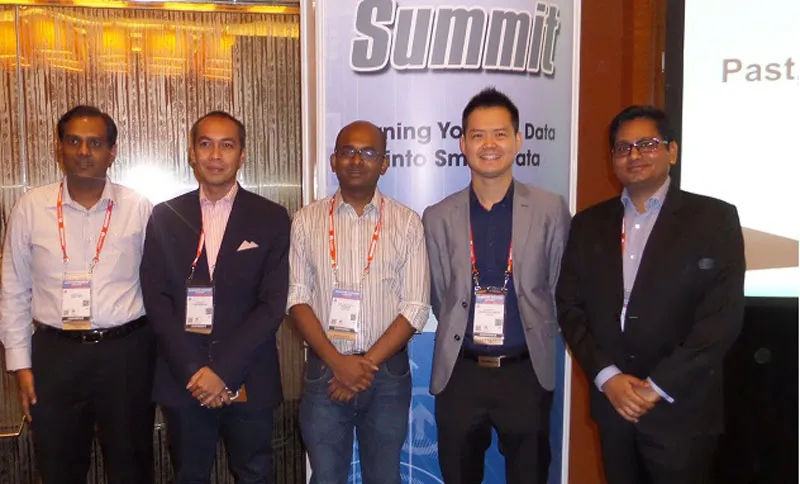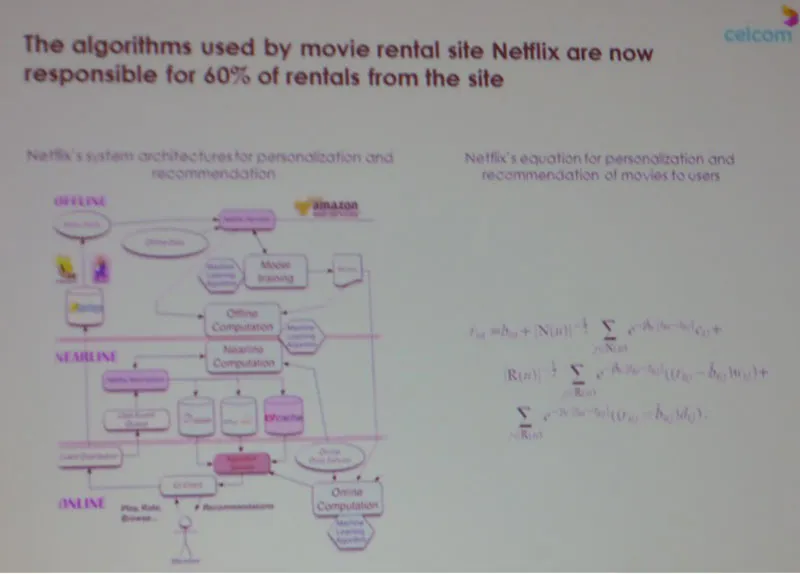From Big Data to Smart Data: 10 tips for business leaders
The new ‘ABC’ of business – analytics, Big Data and cloud computing – is taking centre stage in most conferences and publications on business IT, strategy, innovation and startups these days. See for example my reviews of the books ‘Big Data Marketing’ by Lisa Arthur and ‘BigData @ Work’ by Tom Davenport, as well as implementation tips and advice by the TiE Bangalore panel.

A day-long track at the Communicasia conference in Singapore this week featured a range of Big Data experts: Arun Sundar (Vice President – Global Strategy and Alliances, TrustSphere), Shailendra Soni (Industry Principal, Frost & Sullivan Asia Pacific), Rohit Kanwar (CEO, Bistip.com), Ankur Gupta (IT Director – Big Data, Sears), Dr. Amy Shi-Nash (Chief Data Scientist, DataSpark, Singtel), Himanshu Jha (Head – Data Solutions and Business Intelligence, Yahoo! Asia Pacific), Bob Chua (CEO, Pulse Group), Vinny Vijeyakumaar (Managing Partner and Co-Founder, Sparkline), George Chua (Head of Commercial Analytics, Celcom Axiata) and Gaurav Bansal (Client Engagement Professional, ASEAN, IBM).
Here are my key takeaways from the panels and sessions, in the form of 10 tips for business leaders, managers and innovators.
- Size does not matter
Even smaller companies need the Big Data advantage; it’s a myth that only big companies stand to gain from Big Data. For example, small financial trading companies still deal with huge volumes of rapidly-changing data. The future will not be won by big companies pitted against smaller ones, but smarter companies against less intelligent ones. However, more work needs to be done to pitch Big Data solutions in the language of the SMB.
- Go beyond transactions to customer journeys
Big Data allows visibility into the entire customer decision-making journey, and thus opens up the possibility of predicting purchase and follow-through behaviours. It also allows the creation of a wider range of customer personas, with more detailed and deep profiling.
- Differentiate between the old data and Big Data advantages
Traditional business IT metrics have always focused on issues like better conversion rates and longer retention. New results offered by Big Data include real time tracking and response, new metrics such as buzz factor, and innovation via data-led creation of new products and services. Successful companies ahead of the learning curve can even create new Big Data services out of their competencies.
- Chunk metrics into near-term, medium-term and long-term results
Depending on organisational priorities, the CIO can come up with a range of metrics and achievements. For example: lowering of storage costs could be a near-term metric, getting new insights could be a medium-term metric, and adding IoT inputs could be a long-term metric. Depending on the organisation’s size and industry pace of change, near term could refer to three to six months, medium term six to 18 months, and long term 24-48 months.
- If you have it, keep it
Some CIOs are not sure how much data to archive, and for how long. It is probably better to keep all the data you have because the questions and frames for interpreting the data may arise only in the future. However, in some sectors like finance and healthcare, regulations and government stipulations may require all records to be maintained at all times. Within the organisation, the CIO usually owns the data (in sectors like telecom), or the CMO (retail).
- Reinvent outreach through algorithmic marketing
Don’t rely only on the gut instincts of your creative teams, back up the marketing with self-learning algorithms. Algorithms are already driving 60 per cent of the rentals from NetFlix. Algorithms are being used by AI firm Epagogix to predict box office takings of movies, based on script comparisons. Narrative Science generates equity research reports via scans of public and private data – and produces them largely via AI generative techniques and minimal human intervention. Celcom uses algorithms to dynamically update pricing and volume plans for mobile data and traffic.

- Engage with startups
More VC and PE money is powering Big Data and analytics startups than ever before. Analytics is a huge opportunity for startups in regions like Asia, but many seem to be content with gathering the low-hanging fruit and launching me-too initiatives. Some startups, however, are indeed chipping away on various frontiers of enterprise IT and business processes. But the large enterprise IT firms have woken up to the challenge and are launching ‘intrapreneurial’ ventures of their own, or are engaging with startups (see my earlier column, ‘15 innovation tips: how large corporations can successfully engage with startups’). The larger IT firms will not be dislodged so easily.
- Eye on the future: distributed algorithms
In future, competitive advantage may lie in embedding intelligence right at the product and component levels, without relying only on central intelligence. Algorithms are transforming other industries as well – algorithmic architectural design was used in the creation of Beijing’s award-winning National Swimming Centre and National Stadium (the ‘Bird’s Nest’), and is also transforming modern art.
- Do you have an AI Lab?
Artificial intelligence will continue to enhance or even take over more and more business functions. It will be key for large and ambitious companies to set up their own AI labs to master competencies in areas like self-learning algorithms.
- Champion Big Data as a competitive advantage
Many CEOs have left Big Data to the CIO portfolio, when in fact they should leverage it as a core competitive advantage. To succeed in Big Data, companies will need to pick the right champions to spearhead this inter-disciplinary initiative, and manage the talent war.
Data science is the new alchemy, as data becomes the lifeblood of new insights, positioning and strategy. Getting the right talent will be an uphill challenge, and learning on the job will be a personal and professional mandate. At a global scale, interesting pockets of excellence in Big Data and analytics are emerging in countries like India and regions like Eastern Europe.

The panel also cited the work of John Zysman, Professor of Political Science at the University of California, Berkeley, who says we are in the midst of the ‘fourth services transformation’ with the rise of ‘rule-based IT tools in service activities.’ See also my reviews of the related books ‘The Code Halo’ by Malcolm Frank, Paul Roehrig and Ben Pring and ‘Connected by Design’ by Barry Wacksman and Chris Stutzman.
In sum, these are still early days in converting Big Data into Smart Data, with more shifts predicted in future as enterprises redesign their architectures and flows to inter-connect with their business partners and the broader ecosystem.







